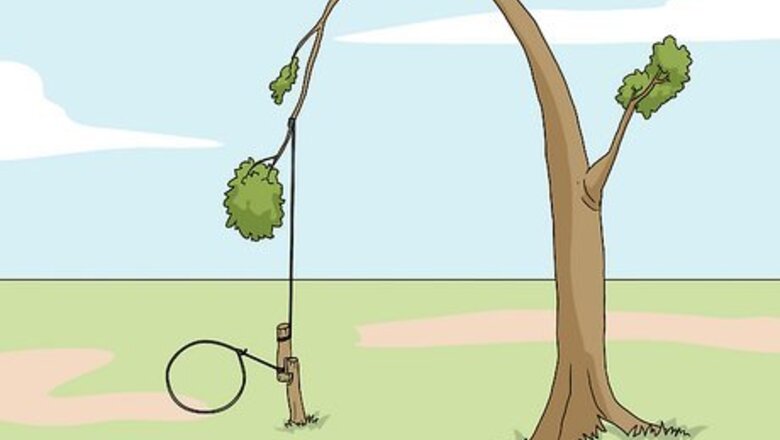
views
Making a Small Game Trap
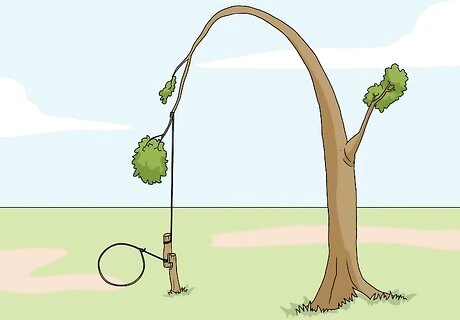
Learn the various parts and functions of a small game trap. Each starts with an engine, which is a young tree that connects to the snare that catches the small game. The snare is made up of a noose that is connected to a hook stick, which is connected to a base stick in the ground via a notch. The hook stick is also connected to the engine's branch via leader line connected to its top. When the animal walks through the nose, the sticks come loose and the leader line pulls the noose upward, trapping the animal. The connection between the 2 sticks is called a hook trigger. The tension between the engine's brach pulling upward on the leader line and the base stick keeping the hook stick steady is what holds the force that pulls that animal up using the noose.
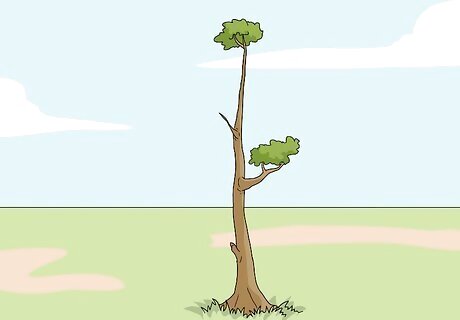
Find a young, strong tree close to signs of animal activity. The tree will act as the engine, so choose one that is young and strong, but not so much that it can't bend. Take a walk through potential locations and look for shelters, tracks, scratches, and other signs of animal activity. Choose a tree strong enough to hold your game in the air until you find it.
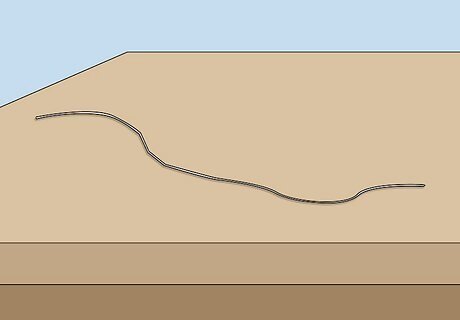
Select 18 to 24 inches (46 to 61 cm) of noose material. If you can, use craft wire, picture hanging wire, or copper strands. If you use another material, make sure it's flexible enough to tighten quickly when pulled up but strong enough to hold small game in the air. Alternative materials include shoe strings, dental floss, and fishing line. If you're going to be in the wilderness with no preparation, use natural noose material like dogbane, milkweed, and stinging nettle.
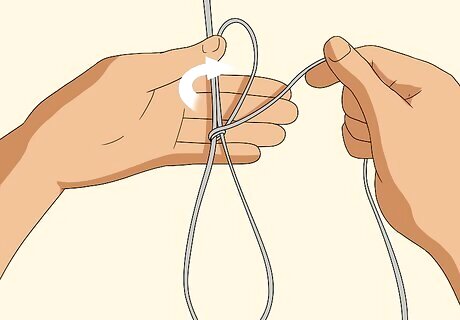
Tie a noose with your chosen material. Create a "U-shaped" bend (also known as a bight) with its opening on the left side. Create another bight at the end of the first one bending back in the opposite direction to create an "S" shape. Put the end of the material under all 3 legs and wrap the end over them—continue this motion at least 6 more times. Make sure that the top of the second bight is poking out above the topmost turn to form a loop. Pass the free end of the material through the loop formed by the second bight from front to back. Make sure that all 3 legs of the "S" are parallel. Tighten each turn one by one as you make them. You can make more than 7 turns, but always use an odd number so that you can finish off the knot properly. Finish your noose by pulling down on the right-hand edge of the noose created by the first bight to tighten it.
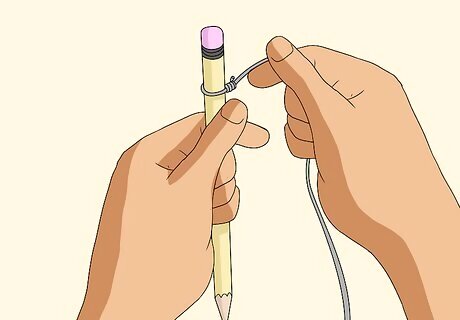
Create a loop in one end of your leader line the diameter of a pencil. If you're using wire, create your loop by forming a circle with one end and then twisting the free end back onto itself multiple times. For string, fold the free end back onto itself and then tie an overhand knot. After creating a loop, take the other free end of the material and run it through the loop. Tie an overhand knot by gripping the end of the noose material 2 to 3 inches (5.1 to 7.6 cm) from the end. Pass the material over the point you're gripping (called the standing part) and tuck it inside the loop from the other side. Pull it out through the loop toward you. Now, pull both ends away from each other to tighten.
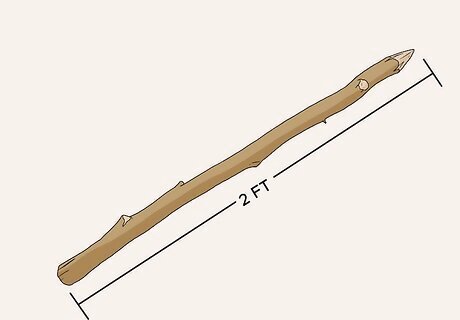
Sharpen the end of a 2 foot (0.61 m) base stick. Find a stick that is a hardwood species like ash, oak, hickory, maple, or osage. Angle a knife or cutting tool like a axe or saw 45 degrees toward the stick and make small, even strokes away from you. Continue removing strips of the stick while rotating it until you create a pointed end. Make sure that the point is sharp enough to penetrate soil.
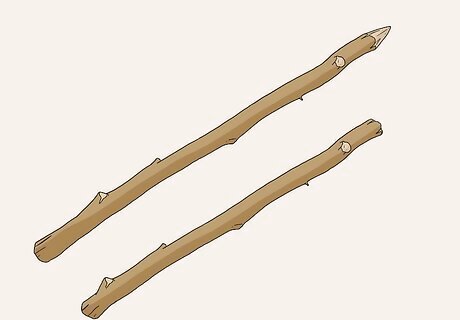
Find a hook stick that is slightly shorter than the base stick. The hook stick is going to be attached to the noose at one end and the leader engine at the other. In addition, its notch will fix it to the ground stick. Try and find a stick that is as close in thickness to the base stick as possible.
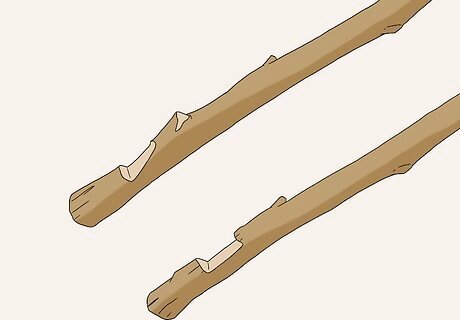
Carve a notch into the tip of each stick. Start by marking the lines of the notch with a knife. Make sure that each notch is around 2 to 3 inches (5.1 to 7.6 cm) long and begins about 2 to 3 inches (5.1 to 7.6 cm) from the tip of the sticks. Connect the sticks via their notches when you're done. Make sure you can pull them in opposing directions when they're connected without them sliding apart.
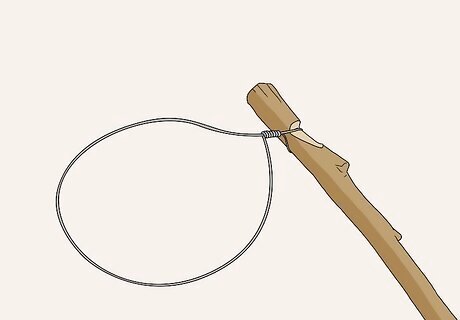
Tie the free end of your noose to the bottom of the hook. Connect the free end to the location on the hook stick right about the notch that connects it to the base stick. After tying the noose to the hook, pull upward on the string and down on the hook to ensure it doesn't come off. Make sure to tie the noose to the stick as tightly as possible.
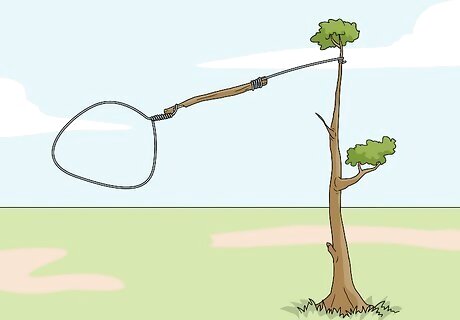
Connect the hook to your engine using the leader line. Double-check that the hook's noose is tied just above the notch. Now, tie the leader line to the free end of the hook and then tie the free end of the leader line to the sapling you have selected as your engine. Tie the knot approximately 6 to 12 inches (15 to 30 cm) from the top of the sapling's branch and then pull the hook down to the base stick to make sure it can reach it. Test the sapling to ensure that it's sturdy enough to connect to the base piece. If it's too loose, cut the string down smaller. If it's too tight to reach the base piece without breaking the branch, remove the leader line and create another one that's longer.
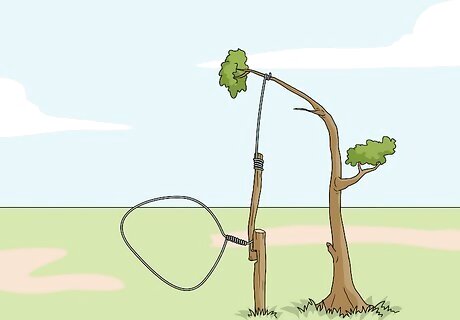
Arm the trap by connecting the notches on the hook stick to the base stick. Be sure the sapling is bent at a 90-degree angle after connecting the sticks. Make sure that the noose is on the ground in front of it and the loop is open so that it can catch your prey. Your snare trap is now ready! Test it out by placing a stick into it to set off the trigger. To disarm the trap, detach the hook stick from the base stick.
Creating a Fish Trap
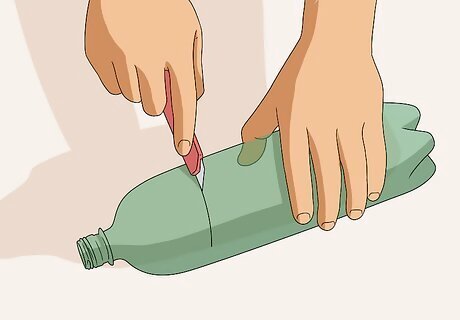
Remove the top of a 0.52 gallon (2.0 L) pop bottle using a knife. Any kind of plastic bottle will work for this trap. Insert the knife horizontally into the bottle at the point where the curve straightens out. Hold the bottle steady and move the knife in and out while pulling it steadily around the bottle's circumference. Be sure to hold the bottle at a point away from the cutline so you don't cut yourself.
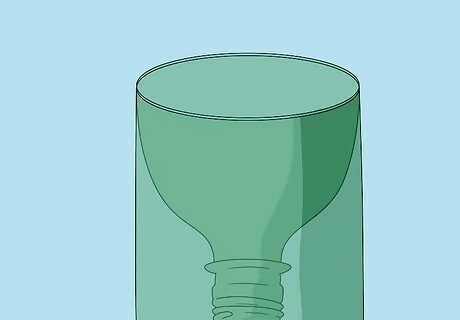
Insert the top of the bottle into the body. Hold the opening of the bottle upward. Turn the top so that the tip is facing down and into the opening. Shove it downward gently until it fits snugly into the bottle. If the top is a bit loose after inserting it into the bottle, don't worry—you can fix it with screws afterward.
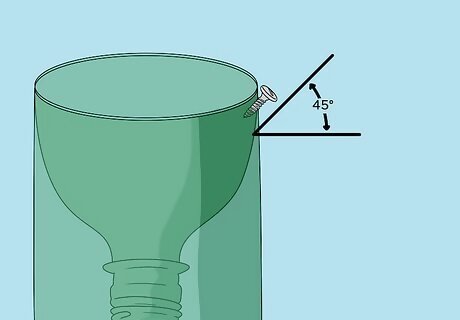
Drive 2 screws through the sides of the bottle where it meets the top piece. After inserting the top, hold the bottle on its side on a flat surface. Angle an electric drill tip onto the spots for the screw holes at a 45-degree angle downward. Hold the bottle steady and drill the holes. Afterward, insert screws through the holes and cap them off with nuts to fix the top piece of the bottle to the bottom. Use small 304 stainless steel M3*8 (3 mm x 6 mm) screws with M3 nuts, if possible. If you don't have an electric drill, use a tack to make the initial holes. Afterward, press the screws through with your hands or a screwdriver.
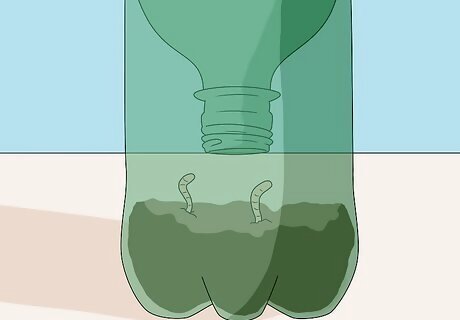
Pour small rocks and fish food into the bottle. Dump some pebbles or small rocks through the opening. Don't fill it too much—just enough so that the trap will anchor to the floor of the lake. Afterward, add some small scraps of bait, insects, or fish food to attract fish. Use fish bait like worms, maggots, hotdogs, or cereal for the best results.
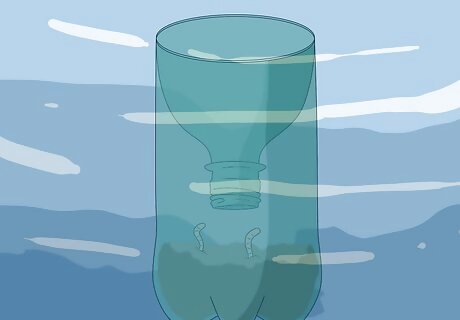
Place the bottle in shallow water, such as a lake. Once you place your bottle, it's time to wait. After the fish swim through the hole, they won't be able to swim out. Continue creating and placing traps to increase your chances of catching fish. To use your trap in a portable manner while you travel, dip it into densely populated areas and drag it through the water. Do this periodically and you might get lucky!
Crafting a Bird Trap
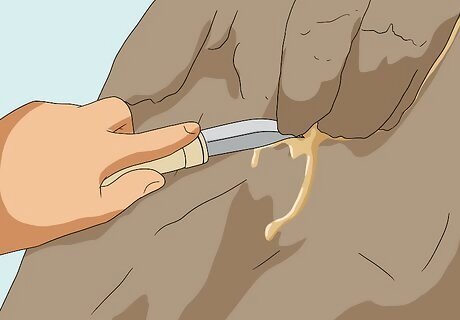
Remove pine resin from pine tree bark. Wear some old clothing and gloves. Using a small knife, remove the outer layer of resin from local pine trees. After removing it, scrape it into a glass jar with a hunting knife. During cold weather, you might need to break the resin off instead of scraping it. To remove pine resin from your skin, rub some melted animal fat onto it and then wash it with water and soap. If you can't find pine trees, look for any tree with a sappy resin on its bark, also known as pitch.
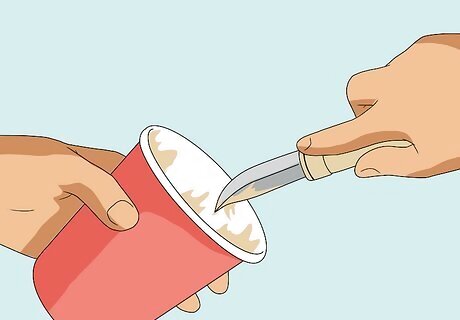
Line the inside of a plastic cup with your pine sap. Drag your knife along the inside of your glass jar. Now, rub the pine sap along the inside of the plastic cup with your knife. Continue rubbing it on until there is a thin layer of sap around the inside. Use Dixie cups for the best results.
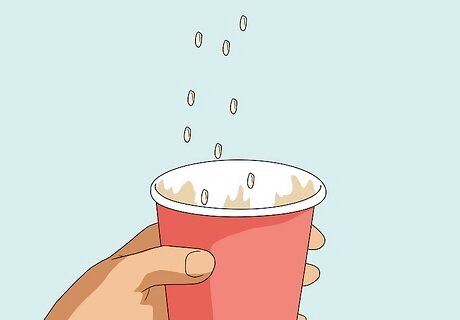
Sprinkle birds seeds or bait into the inside of the cone. Purchase some bird seeds or other bait, such as peanuts, millet, or safflower seeds. Sprinkle them generously into the inside of the cup. Cover the top of the cup with your hand and shake it around. Continue spreading and shaking the seeds until there is a layer of seed along the inside. Spread the seeds along the inside of the cup with a knife to ensure an even layer of bait.
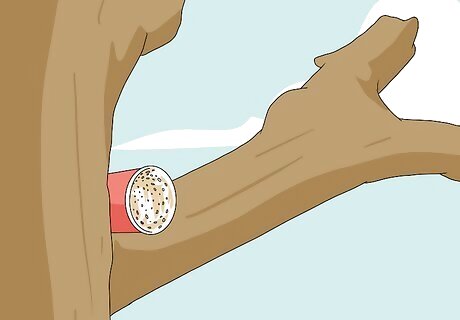
Place the cup on its side in an open area of frequent bird activity. Open regions near trees and vegetation and areas that overlook vantage points—like trees and power lines—are ideal. Aside from chirping and bird noises, look for the common perching locations, such as beside or above the area that they nest. Male birds often sing to mark territorial boundaries – mark these locations on your map and you can determine the location of their nest. Females often call to their mates on their way to the nest—listen for these calls to help you plot the to their nesting location!
















Comments
0 comment